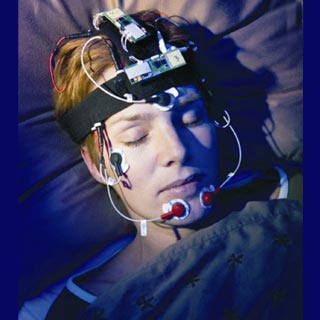
The miniaturized wireless system may let patients wear the device in the comfort of their home, therefore allowing premature viewing of abnormal sleep profiles outside clinics. The sleep staging system has apparently been legalized in the sleep laboratory at the University Hospital Center (CHU) in Charleroi, André Vésale Hospital (Belgium), against a commercially existing reference system. With this legalization, the technology may be ready for product development, thereby opening new doors for distant and comfortable sleep monitoring.
Sleep disorder could be a major health issue. About 10% of the U.S. population is said to be affected by sleep apnea, and roughly 1 billion people worldwide, apparently undergo some type of chronic nasal congestion during sleep.
IMEC’s wireless sleep staging system is said to be light in weight, wearable and miniaturized. It may considerably boost the comfort of sleep disorders tests. The system apparently comprises of a head band with three sensor nodes said to be gauging 2 EEG-channels (electroencephalogram) to examine the brain activity, 2 EOG-channels (electro-oculogram) to supposedly check the eye activity and 1 EMG-channel (electromyogram) to apparently observe the chin muscle activity.
These 5 signals apparently supply the necessary information for sleep staging as per the Rechtschaffen and Kales standard. The sensor nodes incorporate IMEC’s proprietary ultra-low power biopotential read-out ASIC (application-specific integrated circuit) to increase and filter the 5 diverse ExG signals. The calculated ExG signals are claimed to be wirelessly transmitted to the recording computer. No extra wires from the head to the body or from the head to the recording device may be required. This may make it comfortable to wear. The system may be optimized for low power leading to approximately 12 hours autonomy.
In a controlled clinical environment, the system has apparently been validated and bench-marked with state-of-the-art ambulatory monitoring equipment. About 12 healthy volunteers were signed up in the study, and were supposedly examined for a full night via the wireless and the reference systems set-up in parallel.
At the end of the study, the indicators were supposedly given to a sleep expert for blind scoring resulting in two hypnograms for every subject. From the hypnograms, sleep statistics like percentage of sleep time in every stage was supposedly subtracted, and weighed against the two systems. Hypnograms were also apparently contrasted directly for resemblance.
The investigations have supposedly verified the possibility of the wireless sleep staging system to substitute present monitoring systems.
